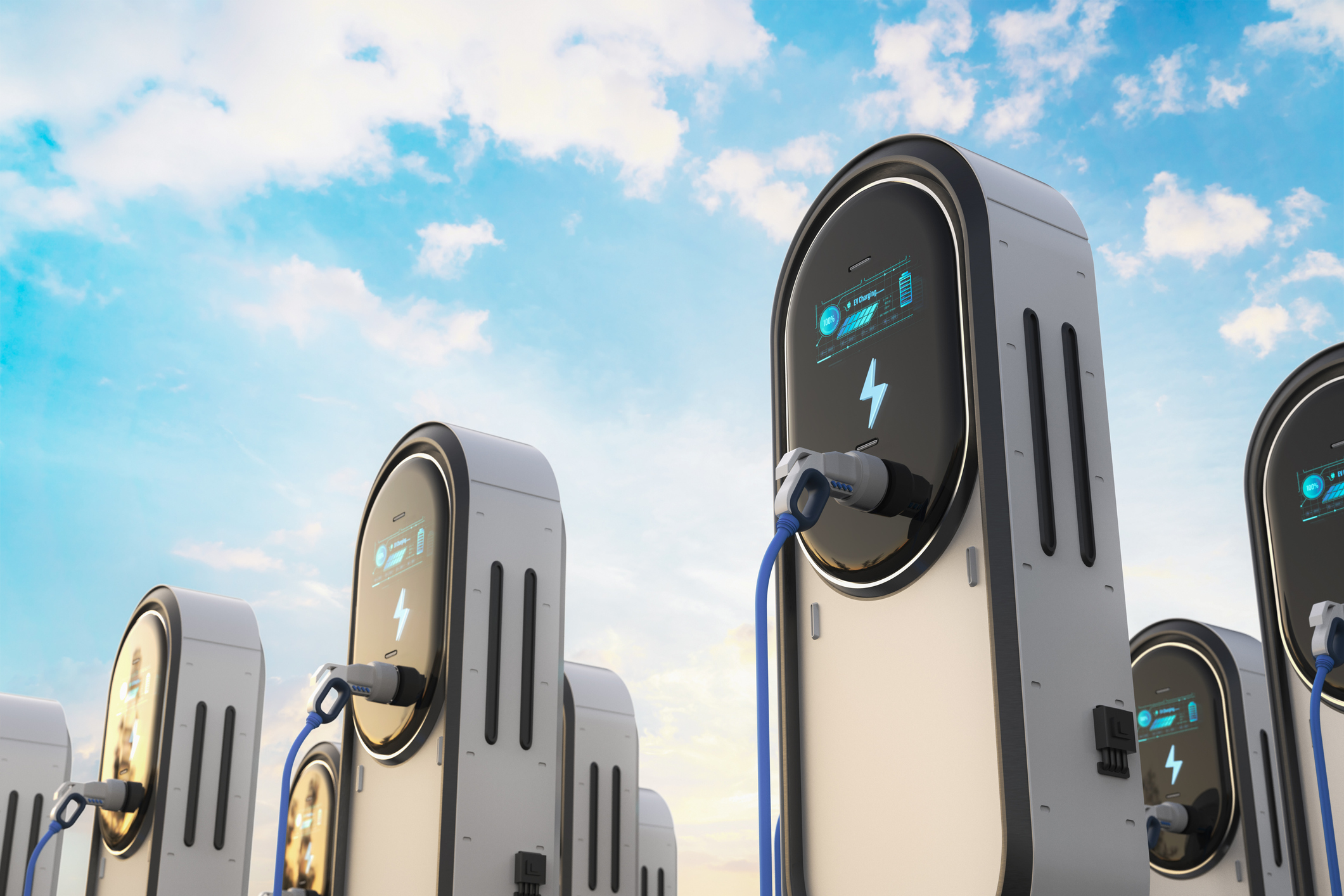
Ionna, a new EV charging network in the United States, has been established by seven leading automakers—BMW, General Motors (GM), Honda, Hyundai, Kia, Mercedes, and Stellantis.
Announced on a recent Friday, this initiative aims to revolutionize the electric vehicle (EV) infrastructure by introducing 30,000 new charging stations by the end of the decade. Ionna seeks to emulate the success of the European charging network, Ionity, which is a testament to the benefits of collaborative efforts in expanding EV charging infrastructure.
Seth Cutler, previously the president and COO of EVconnect and a chief infrastructure engineer at Electrify America, has been appointed as the CEO of Ionna. His experience in the EV charging sector positions him as a key player in steering Ionna towards achieving its ambitious goals.
What Will Ionna’s Charging Network Look Like?
The network’s charging stations will be strategically located along highways and in urban areas to cater to the needs of EV drivers. Some of these stations will be flagship sites, offering amenities reminiscent of airline lounges, including bathrooms and refreshments, to provide a comfortable and convenient charging experience.
The charging cables at Ionna stations will be compatible with both the Combined Charging System (CCS) and Tesla’s North American Charging Standard (NACS) connectors, ensuring a wide range of EVs can be accommodated. Furthermore, these stations will integrate with the automakers’ own payment apps and in-car route planning systems, supporting seamless Plug and Charge capabilities or other forms of integrated payment.
A Unified Effort Against Tesla’s Dominance
The formation of Ionna marks a significant step towards enhancing the EV charging infrastructure in North America. It addresses the need for a more reliable and user-friendly charging network, challenging the dominance of Tesla’s Supercharger network. Here are the automakers involved in this collaborative effort:
- BMW: Brings its expertise from participating in the European Ionity network.
- General Motors (GM): Aims to expand the EV charging infrastructure for its growing range of electric vehicles.
- Honda: Seeks to support its electrification strategy with more accessible charging solutions.
- Hyundai: Adds to the initiative with its significant investments in electric mobility.
- Kia: Joins its affiliate Hyundai in pushing for a broader EV charging network.
- Mercedes: Brings luxury and innovation to the electric vehicle charging infrastructure.
- Stellantis: A conglomerate of automotive brands aiming to electrify their vehicle offerings.
This collaborative venture underscores the industry’s collective push towards a future where electric vehicles are seamlessly integrated into our daily lives through improved infrastructure and accessibility.
From European Success to American Innovation
This collaborative venture follows the example set by Ionity in Europe, where BMW, Daimler (Mercedes-Benz), Ford, and VW Group (with Hyundai/Kia joining later) joined forces to create a reliable and expansive charging network across the continent. The success of Ionity, which plans to have over 5,000 charging locations by early 2025, highlights the effectiveness of collective action in addressing the challenges of EV charging infrastructure development.
Overcoming Challenges and Setting New Standards
The move towards creating Ionna comes after several attempts and discussions among automakers regarding the establishment of a joint charging network in the U.S. Initial reluctance from some automakers, due to concerns over the substantial investment required and its impact on profitability, had previously hindered progress. However, the pressing need for a comprehensive and reliable charging network, coupled with the dissatisfaction with the existing options like Electrify America, catalyzed the formation of Ionna.
What Future Does Ionna Promise for EV Charging?
Ionna promises to set new standards for EV charging, focusing on reliability, convenience, and user experience. The following table summarizes its key features and offerings, aiming to revolutionize the EV charging experience:
| Feature | Description |
|---|---|
| Charging Cable Compatibility | Compatible with both the Combined Charging System (CCS) and Tesla’s North American Charging Standard (NACS). |
| Payment and Planning Integration | Stations will integrate with automakers’ own payment apps and in-car route planning systems. |
| Amenities | Flagship sites will offer amenities similar to airline lounges, including bathrooms and refreshments. |
| Strategic Location | Stations will be located along highways and in urban areas, catering to a wide range of EV drivers, and also sheltered from the elements, in safe, well-lit locations. |
| Charging Capacity | Stations will feature six to 10 charging cables capable of 350 kW each, as quoted in Charged EVs. |
| User Experience | Focus on reliability, convenience, and providing a pleasant charging experience. |
This commitment to quality and customer satisfaction indicates a shift towards making EV charging as commonplace and straightforward as refueling at a gas station.
As Ionna takes shape, with its first charging stations expected to open within the year, the automotive industry and EV drivers alike are watching closely. The success of this network could mark a pivotal moment in the transition to electric mobility, providing the infrastructure needed to support the growing number of EVs on the road. The collaboration between these seven automakers reflects a shared vision for a future where electric vehicles are supported by a robust, reliable, and accessible charging network, making the switch to electric a more attractive option for drivers across North America.
Featured Image courtesy of PhonlamaiPhoto/Getty Images
